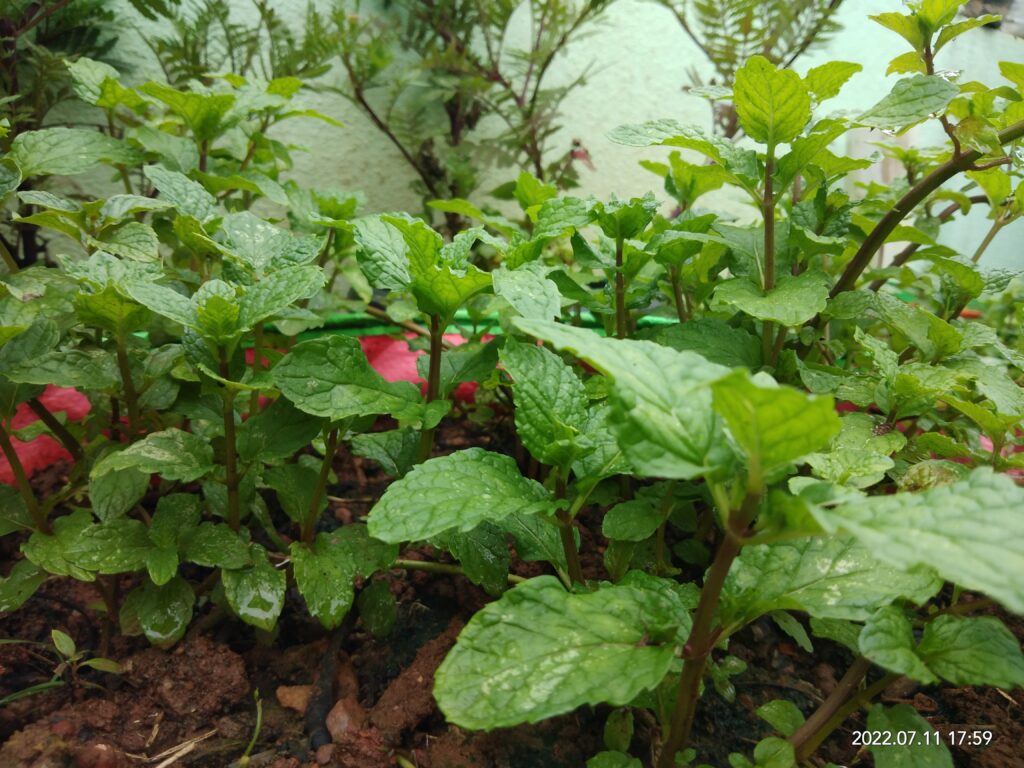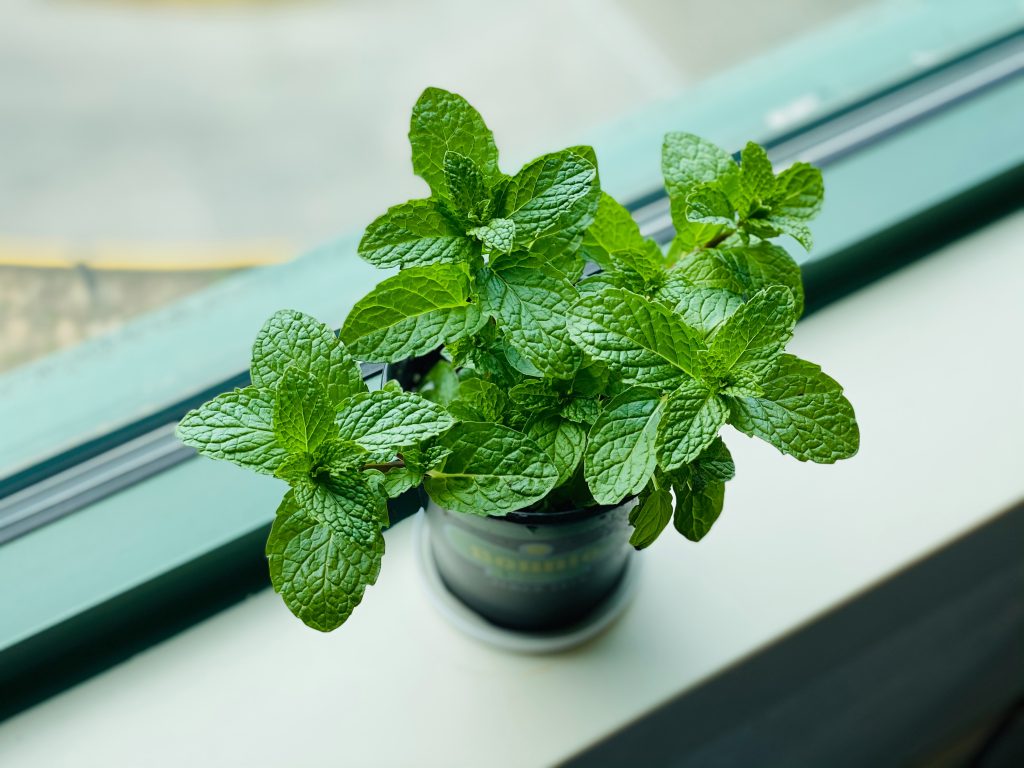
Mint or puthina leaves can grow very eassily
Mint leaf is a popular herb that is used in cooking, baking, and as a flavoring agent in various beverages. It is a member of the Mentha family and there are many varieties of mint, including peppermint, spearmint, and chocolate mint.
Mint leaves have a refreshing, cool taste and a strong, pleasant aroma. They are commonly used to add flavor to dishes such as salads, soups, and sauces, and are often paired with lamb, chicken, or fish. Mint leaves are also used in beverages such as tea, lemonade, and cocktails, and are a popular ingredient in desserts such as ice cream and chocolate.
In addition to its culinary uses, mint has some potential health benefits. It is a natural digestive aid and may help to alleviate digestive issues such as indigestion and bloating. Mint is also believed to have anti-inflammatory properties and may help to reduce inflammation in the body. Additionally, mint leaves may have some antibacterial and antiviral properties.
Mint leaves can be easily grown in a garden or in a pot, and they are a low-maintenance plant that grows quickly. They prefer well-drained soil and partial to full sun exposure. Mint leaves are easy to harvest and can be used fresh or dried for later use. Overall, mint leaves are a versatile herb that can add a fresh, delicious flavor to many dishes and drinks while also potentially offering some health benefits.

How to grow Mint Leaf
Mint is a popular herb that is easy to grow and can be used for a variety of culinary purposes, such as flavoring teas, desserts, and savory dishes. Here are the steps to grow mint:
- Choose a location with partial shade. Mint prefers moist soil and partial shade to prevent the soil from drying out too quickly.
- Prepare the soil by adding compost and organic matter to improve soil fertility and drainage. Mint prefers well-draining soil that is slightly acidic (pH 6.0-7.0).
- Plant the mint seeds or young mint plants in the prepared soil. If you are planting seeds, sow them 1/4 inch deep and 1 inch apart. If you are planting young plants, space them 12-18 inches apart.
- Water the soil thoroughly after planting to settle the roots in the soil. Water regularly to keep the soil moist but not waterlogged.
- Fertilize the mint plants with a balanced fertilizer every 2-3 weeks during the growing season.
- Pinch back the tips of the mint stems regularly to encourage bushier growth and prevent the plant from becoming too leggy.
- Harvest the mint leaves as needed by snipping off the stems just above a set of leaves. This will encourage the plant to produce more leaves.
- Mint plants can quickly spread and take over an area, so it’s a good idea to plant them in containers or in a separate bed from other plants.
With these steps, you can easily grow and maintain a healthy mint plant in your home garden.
